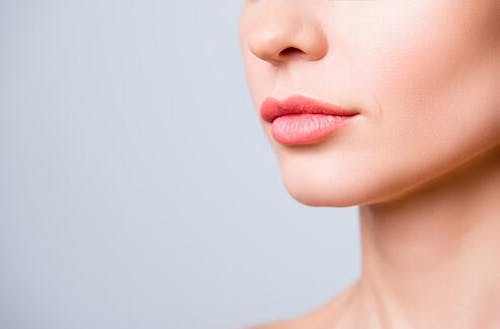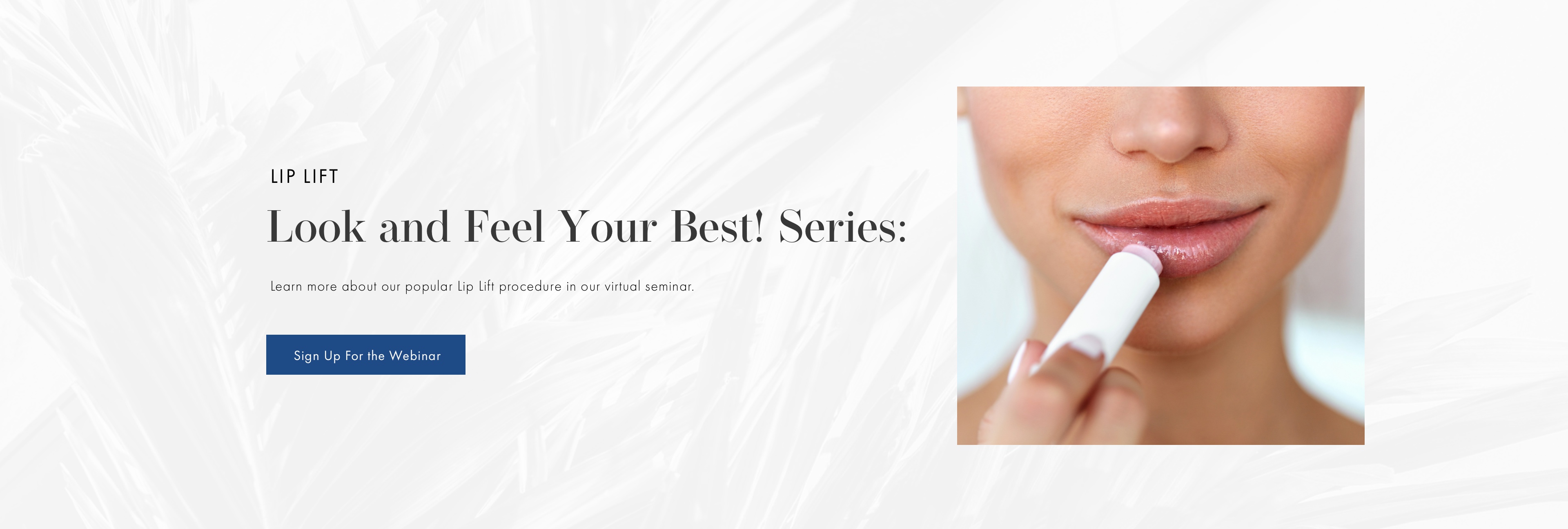On 03
May
2021

Many patients long for fuller or more youthful appearing lips. Over the years, I have found that these concerns may be divided into two groups: those who seek improvement in the appearance of the aging lip and those who seek a more voluptuous or fuller lip. Many patients want both: a more youthful shape to their lips and a fuller lip.
There are a number of surgical (permanent) lip lift procedures. Often, I am asked which is the best lip lift procedure. There is no ‘best’ lip lift technique, instead the answer lies within the unique anatomical features of each individual’s lips as well as the concerns of each unique patient.
The Ideal Lip
The lower lip should be fuller than the upper lip. The perfect lip exhibits a ratio such that the upper lip is approximately 50-75% of the vertical height of the lower lip. Some like to cite the golden ratio (1.0:1.618) as the ideal balance between the fullness of the upper to the lower lip. In any case, the upper lip should be less full than the lower lip. But of course, there are certain personal preferences among individuals that may influence this ‘ideal’ set of ratios.
What other features make beautiful lips? These include a pronounced cupid’s bow, a defined vermillion cutaneous (pink-white) border. The corners of the lip should gently turn upward. There should be symmetry between the left and the right sides of the lip. There should be fullness in the center of the lower lip that tapers out towards the corners. The length of the white upper lip is ideally about 12 to 15 mm (measured from the base of nose to the pink-white line of the upper lip).
The Aging Lip
As the lip ages, we see characteristic changes over time. This would include shortening of the pink upper lip (vermillion) and thickening of the white upper lip (the span of skin between the nose and the upper lip). The space between the nose and lips seems to lengthen. The philtral columns become elongated, flattened and lose their definition. The vermillion (pink fullness) of the upper and lower lips are reduced and the lip becomes deflated. The lips thin and lose volume. The golden ratio of 1:1.618 between the upper and lower lips becomes closer to 1:1.
Types of Lip Lift Procedures
There are a number of different upper lip lift techniques. There is no one type of lip lift procedure that fits every patient. Instead the approach should be customized and individualized. The technique that is right for you is based upon your age, unique individual anatomy, and personal preferences. Your surgeon should be familiar with and consider all types of lip lift when assessing which lip lift procedure is most suitable to help you achieve your desired outcome. The types of lip lift are discussed below.
The Subnasal or Bullhorn Lip Lift
The subnasal or bullhorn lip lift is a technique that creates a fuller upper lip, raises the central upper lip and, importantly, shortens the white upper lip. It decreases the ‘space’ between the nose and the lip. As mentioned above, as we age, the white upper lip (distance from beneath the nose to the pink upper lip) lengthens. This is a hallmark sign of aging. The bullhorn or subnasal lip lift is particularly useful at shortening the white upper lip, creating fullness of the central pink upper lip, and creating some tooth show. As part of aging and the lengthening of the white upper lip, this youthful tooth or dental show is lost and this is also an aging characteristic. The subnasal (bullhorn) lip lift is particularly helpful at approving this appearance.
The incision for the bullhorn lip lift is hidden underneath the shadows of the nose and camouflages quite nicely with time. The subnasal lip lift does not change the appearance of the nose and can be performed in conjunction with other procedures such as rhinoplasty and facelift. A disadvantage of the subnasal lip lift is that, although it creates a fuller central upper lip, it does not address the downturned corners of the mouth, a common hallmark of aging lip.
The Corner of Lip Lift
The corner of the lip lift lifts the downturned corners of the lip. The downturned corners of the lip create an angry or bitter appearance. This appearance is corrected by the corner of the lip lift which gently elevates the corners of the lip and creates a more youthful and pleasant appearance reversing the unfavorable aging sign of downturned corners of the mouth.
The incision for the corner of lip lift is hidden along the pink or the pink-white line of the lateral upper lip and extends for 5 to 10 millimeters at a 45-degree horizontal from the corner of the lip headed towards the nasolabial fold. Like all facial incisions, these incisions take time to heal but generally heal quite nicely and are typically inconspicuous once healed.
The key advantage of the corner of the lip lift is a more youthful shape and contour of the corners of the lip. A key disadvantage is that the corner of the lip lift does not create a substantially fuller lip particularly along the central upper lip and so it may be paired with other lip rejuvenation techniques such as the extended corner of lip lift to live fill to the lip. The corner of lip lift is often performed with other age defying techniques such as facelift, blepharoplasty and laser skin resurfacing.
The Extended Corner of The Lip Lift
The extended corner of the lip lift is similar to the corner of the lip lift in that it aims to create a more youthful shape of the lip and address the downturned corners of the lip. The “extended” corner of the lip lift extends the incision of the corner of the lip lift along the pink-white line of the upper lip towards the center of the upper lip near the base of the philtral column.
Generally, with the extended corner of the lip lift, the length of the incision from the corner of the mouth along the pink-white line towards the philtrum is about 20 to 25 mm. This inconspicuous incision allows a direct lip lift of the lateral upper lip to be performed at the same time as the corner of the lip lift. This creates increased fullness and youthfulness of the upper lip.
Whereas the corner of the lip lift mainly addresses the downturned corners of the lip, the extended corner of the lip addresses the downturned corners of the lip while also creating greater fullness of the upper lip itself. Like the corner of lip lift, the extended corner of lip lift is often performed with other rejuvenative techniques such as facelift, blepharoplasty and laser skin resurfacing .
Direct Lip Lift
The direct lip lift is the ideal procedure for the patient who aims to achieve markedly full and voluptuous lips. The direct lip lift increases the vertical height of the pink upper lip while also decreasing the vertical height of the white upper lip.
This procedure is performed with an incision along the entire length of the pink-white line (juncture of the pink lip and the skin of the upper lip) along the lip along its entire length. The degree of lift can be determined based upon the patient’s preferences. Oftentimes, a patient will draw in their upper lip with lip liner and lipstick, and the direct lip lift allows the surgeon to enlarge the upper lip to meet this line.
The key advantage of the direct lip lift is the degree of fullness that can be achieved with a high degree of precision. This is the best procedure for patients who want a permanent procedure that will create full upper lips. The main disadvantage is the scar placed along the length of the upper line at the pink-white line, although it is generally well-hidden once healed.
LiveFill to the Lips
LiveFill is a technique where the patient’s own natural tissue is harvested and then is used as a filler to augment the lips. This technique can also be performed to smooth and fill the nasolabial folds and marionette lines. Most commonly, the patient’s own soft tissue is harvested at the time of another procedure, such as facelift or blepharoplasty where this tissue might otherwise be discarded. This tissue is then used to augment the lips. The technique of LiveFill could be combined with surgical lip lift techniques such as those discussed here (subnasal or bullhorn lip lift, corner of lip lift, extended corner of lip lift, and direct lip lift).
The technique of lip lift depends upon the age of the patient, the patient’s own individual anatomy, and their unique aesthetic preferences. Lip lift surgery is commonly performed under local anesthesia in the office as a stand-alone procedure or in combination with rejuvenative facial surgery such as laser skin resurfacing, blepharoplasty, and facelift.
The best way to determine which technique is best for you is to meet with a lip rejuvenation specialist like Dr. Clevens to explore your options. Schedule your consultation to discuss your concerns, talk about your goals for your lips and mouth, and choose the lip procedure that will best achieve your desired results—full, youthful lips that you love!


